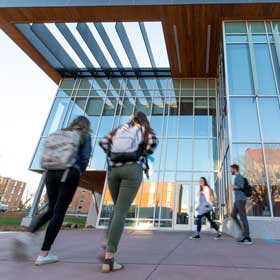DSU student studied microplastics in Utah over summer
October 10, 2025
Dakota State University international student, Basbo Ayelazono, spent the summer studying microplastics at the University of Utah in its mechanical engineering department.
“I wanted a summer internship that was related to the research I’ve been doing previously with Dr. Bakker,” Ayelazono said.
She first began studying microplastics through a research project with classmate Vanessa Ocansey and biology professor Dr. Kristel Bakker last winter.
The two students collected water and sediment samples from Lake Herman, Lake Madison, Lake Thompson, and Lake Henry, finding that all four lakes had microplastics.
They went on to present their research at the National Conference on Undergraduate Research in Pittsburgh.
“Microplastics have been increasing in the world, but the knowledge deficit is still large,” she explained.
While in Utah, Ayelazono spent 11 weeks studying how microplastics and oils interact. The internship also gave her opportunities to learn more lab techniques, complete literature reviews, and learn different programming languages.
She spent most days making colloidal solutions with specific types of microplastics, adding a droplet of oil, and analyzing those droplets over a period of eight hours to see changes.
“We decided to study two different microplastics, the most common microplastic in the world, polystyrene, and polyethylene,” she said. “We used vegetable oil to simulate crude oil for oil spillages.”
“We did research at three different concentrations of microplastics: 10 grams per liter, 50 grams per liter, and 100 grams per liter.”
Some of the findings of Ayelazono and her fellow researchers were that significant aggregation of polyethylene occurs at 100 grams per liter. At the same time, polystyrene showed minimal change, remaining relatively uniform at all concentrations.
She especially enjoyed the opportunity to conduct research with Ph.D. level students. After completing her education, Ayelazono is interested in a career in medical technology and is considering an advanced degree in computational biology.
“It reaffirmed my decision to pursue a Ph.D. and go further into the field of computational biology,” she said.
